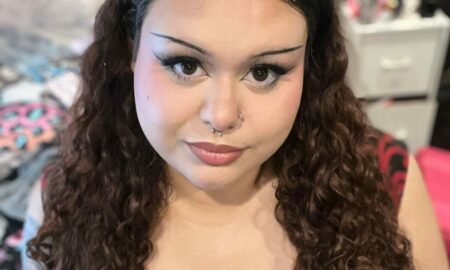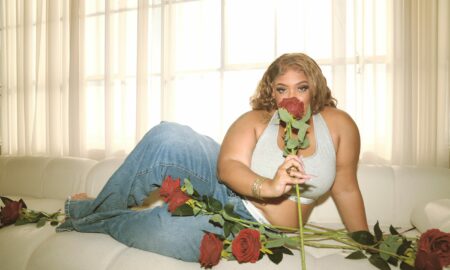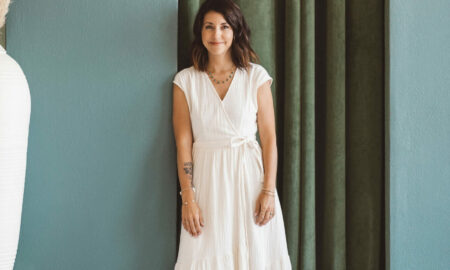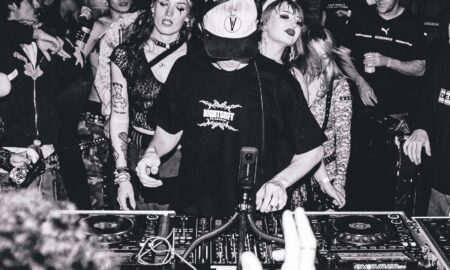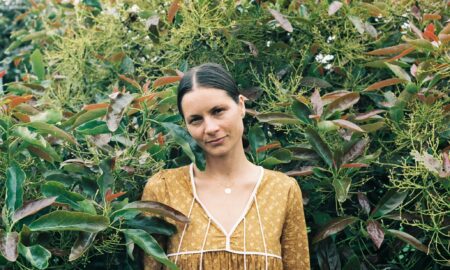

Today we’d like to introduce you to Lilah Rose.
So, before we jump into specific questions, why don’t you give us some details about you and your story.
It took me a long time to plant my feet as an artist–they were pretty cold. A few years ago, while I was still living in Olympia, Washington, I was apprenticing with a costume designer and hoping to follow her into a career of challenging, elaborate work for theater and opera productions. Before that, I was living in Chicago going to film school and crossing my fingers that knowing how to use a camera would somehow parlay into production design for something fun and weird like another Pee-Wee’s Playhouse. And before that, I was at a boarding school outside of Detroit with a distinguished weaving/textile program, aspiring to take to the floor loom but learning fast that a floor loom is actually a big, beautiful computer–noble, but too hard for me. That whole school was pretty damn hard, but above all what I choose to remember from that time is the day-to-day experience of living in a place so completely, inherently informed by design. The Loja Saarinen work I passed every day on that campus is still some of the most beautiful I’ve ever seen, and I wasn’t even in a museum.
Most of the time I was in my pajamas. Feeling at home with art in that way also reaffirmed the respect I already felt for my mom, dad, and sister–all of whom are tremendous artists of their own but might hesitate to refer to themselves as such. Possibly because by practice they each create work that isn’t easy to define outside of the home but is no less beautiful for it. Rugs, bedspreads, wind chimes, furniture, slippers, our house is full of it. Now, since I’ve been with my partner Jean Nagai (landscape painter) for a few years, I’ve steadily been circling back to the idea of work that elicits a sense of domestic familiarity and comfort. Sometimes I like to think of my work as large, complicated pillows.
Great, so let’s dig a little deeper into the story – has it been an easy path overall and if not, what were the challenges you’ve had to overcome?
I definitely found it hard to trust myself as an artist for a while. Looking at the path that leads me here I think I arrived by process of elimination. It was all part valuable experience, part whittling myself down by feeling only partly satisfied by what I was doing. Like plenty of other people out there, I was worried by the supposedly inevitable unreliability of an artistic career. But while I’ve found that yeah, it is inevitably unsteady sometimes, what’s more true is that if you’re not doing something you love what the hell are you doing anyway? That, and for most of my twenties I was living and attempting to work in a small town in Washington. It drew a lot of artists (mostly punk and goth rockers), but we were all living there because it was cheap. Plenty of people were able to successfully utilize it as a home base and tour around, but my partner and I were gradually hamstringing ourselves choosing to play it safe financially and forgo the exposure, the peers, and the experience of living in a big city. You’d think you could manipulate social media enough these days to make visual art wherever you want to but there’s something that feels very essential about living in a place like LA or New York for a while if you want to evolve to another level professionally. And it’s fun. And less homogeneous. See and be seen.
We’d love to hear more about your work and what you are currently focused on. What else should we know?
I make soft sculpture, and I specifically make work that I hope will play well off the other elements of someone’s home. I want it to feel almost like a piece of furniture that lives on the wall. Something you could cuddle with. The home is such a precious place, and it’s very striking when you understand that the space you’re in is both functional and beautiful. The border between the art and its surroundings is there, but it starts to blur. I encourage people to approach me as an artist that will design something specifically for them and their house if they’ll let me. It flatters and serves us both, and it helps me associate with my work more as a form of portraiture.
What moment in your career do you look back most fondly on?
You can’t really beat the moment when someone pays you what you believe your piece is worth for the first time, instead of compromising. I haven’t beat it yet anyway, but that could also be because that particular piece I sold was also the first time a lot of disparate techniques and approaches I had been dabbling in for years finally coalesced into something I could step back and truly appreciate. And trust wouldn’t fall apart, I was doing papier-mache for a long time and watching it gradually disintegrate. Relying on fabric lent my work a lot of much needed permanence besides feeling right, aesthetically. So the process clicked for me with that piece, and as I was tentatively offering it up for validation, someone else immediately agreed, basically. And you can and should romanticize art as much as you want, but money makes the world go round. The money means that I can keep the romance alive.
PContact Info:
- Phone: 3239195635
- Email: [email protected]
- Instagram: @lilahslagerrose





Suggest a story: VoyageLA is built on recommendations from the community; it’s how we uncover hidden gems, so if you or someone you know deserves recognition please let us know here.












